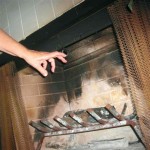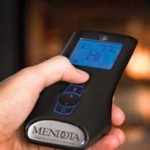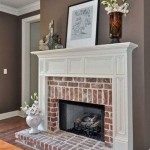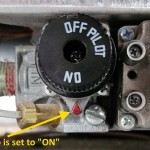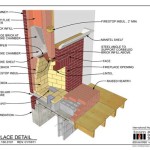Four-Sided Fireplaces: A Comprehensive Overview
Four-sided fireplaces, also known as peninsula or island fireplaces, represent a distinctive category within the realm of fire features. Unlike traditional fireplaces that are typically integrated into a wall or corner, four-sided fireplaces are designed to be viewed from all four sides, creating a focal point that can define and visually connect different areas within a living space. These fireplaces offer unparalleled design flexibility and a dramatic aesthetic, making them a popular choice for modern and contemporary architectural styles.
The appeal of a four-sided fireplace lies in its ability to provide a sense of warmth and ambiance throughout multiple rooms simultaneously. This attribute is particularly advantageous in open-concept floor plans where the fireplace can serve as a visual anchor while maintaining a feeling of openness and connectivity. Furthermore, the design possibilities are extensive, ranging from minimalist glass enclosures to more elaborate structures incorporating stone, brick, or metal.
The selection and installation of a four-sided fireplace involve several considerations, including the type of fuel (gas, wood, or electric), venting requirements, building codes, and aesthetic preferences. Careful planning and professional installation are crucial to ensure the safety, efficiency, and longevity of the fireplace. The following sections will delve into the key aspects of four-sided fireplaces, providing a comprehensive understanding of their design, functionality, and implementation.
Fuel Options and Their Implications
The choice of fuel for a four-sided fireplace is a fundamental decision that significantly impacts its operation, maintenance, and environmental impact. The three primary fuel options are gas, wood, and electricity, each with its own set of advantages and disadvantages.
Gas fireplaces offer convenience and ease of use. They can be ignited with the flip of a switch and often come equipped with features such as adjustable flame height and remote control operation. Gas fireplaces can be fueled by natural gas or propane, and they typically require venting to the exterior to remove combustion byproducts. The efficiency of gas fireplaces can vary depending on the model and venting system, but they generally offer a lower maintenance option compared to wood-burning fireplaces. Gas fireplaces also provide more consistent heat compared to wood, and the flames are predictable and easier to control. The installation of a gas line is required for natural gas fireplaces, which may involve additional costs and permits.
Wood-burning fireplaces provide a traditional aesthetic and the unique ambiance of a real wood fire. They offer a more rustic and authentic experience, complete with the crackling sound of burning logs and the distinctive aroma of wood smoke. However, wood-burning fireplaces require more effort to operate and maintain. They necessitate the manual loading of wood, regular cleaning of ash, and annual chimney inspections. Wood-burning fireplaces also produce more particulate matter and pollutants compared to gas or electric options, and they may be subject to local regulations regarding emissions. The efficiency of wood-burning fireplaces can be lower than gas or electric models, as a significant amount of heat can be lost through the chimney. Moreover, the surrounding area must be fire-resistant to prevent sparks from causing fires. Therefore, wood-burning fireplaces are typically more expensive and time-consuming to own.
Electric fireplaces represent a modern and efficient alternative. They do not require venting, as they operate by converting electricity into heat. Electric fireplaces are easy to install, portable, and offer a variety of aesthetic options, including realistic flame simulations. They are also the safest option, as there is no risk of carbon monoxide poisoning or fire hazards associated with open flames. Electric fireplaces are ideal for spaces where venting is not feasible or desirable. While they may not provide the same level of heat as gas or wood-burning fireplaces, they can effectively warm a small to medium-sized room. Furthermore, electric fireplaces consume energy, which translates to higher electricity bills depending on the frequency of use. However, they usually have a lower upfront cost than other fireplace types.
Design Considerations for Four-Sided Fireplaces
The design of a four-sided fireplace is critical to its overall aesthetic impact and functional integration within the living space. Several factors must be considered, including the dimensions of the fireplace, the materials used, the style of the enclosure, and the surrounding décor.
Dimensions: The size of the fireplace should be proportionate to the size of the room. A large fireplace may overwhelm a small space, while a small fireplace may be visually lost in a large space. The height, width, and depth of the fireplace should be carefully considered to ensure a balanced and harmonious design. Furthermore, it is essential to ensure sufficient clearance around the fireplace to prevent overheating and allow for comfortable movement.
Materials: The choice of materials for the fireplace enclosure can significantly impact its aesthetic appeal. Common materials include stone, brick, metal, glass, and concrete. Stone and brick provide a traditional and rustic look, while metal and glass offer a more modern and contemporary aesthetic. Concrete can be used to create a sleek and minimalist design. The materials should be selected to complement the existing décor of the room and create a cohesive visual theme. Color is also a key component of the material selection. Lighter colors can brighten the space, while darker colors can add a sense of drama and sophistication.
Enclosure Style: The style of the fireplace enclosure can vary widely, from minimalist glass panels to elaborate structures with decorative details. Glass enclosures offer a clean and unobstructed view of the flames, while more substantial enclosures can provide additional storage or seating options. The enclosure style should be chosen to reflect the architectural style of the home and the personal preferences of the homeowner. For instance, a modern home might benefit from a sleek, minimalist design, while a more traditional home might require a more ornate and detailed enclosure. The enclosure can also incorporate shelves or mantels to display decorative objects, adding personality and character to the fireplace.
Surrounding Décor: The fireplace should be integrated seamlessly into the surrounding décor. The colors, textures, and styles of the furniture, flooring, and wall coverings should be carefully coordinated with the fireplace to create a cohesive and harmonious design. The fireplace can serve as a focal point, drawing attention and creating a sense of warmth and ambiance. Consider the placement of furniture around the fireplace to ensure comfortable viewing and conversation. Rugs and cushions can be used to soften the space and add visual interest. Lighting can also play a crucial role in enhancing the ambiance of the fireplace area. Dimmers can be used to adjust the lighting levels and create different moods.
Installation and Safety Considerations
The installation of a four-sided fireplace requires careful planning and adherence to building codes and safety regulations. Professional installation is highly recommended to ensure the safety, efficiency, and longevity of the fireplace. The following considerations are essential for a successful installation.
Venting Requirements: Proper venting is crucial for fireplaces that burn gas or wood. Gas fireplaces require venting to remove combustion byproducts, such as carbon monoxide, while wood-burning fireplaces require a chimney to exhaust smoke and gases. The venting system should be installed according to manufacturer specifications and local building codes. Incorrect venting can lead to carbon monoxide poisoning, fire hazards, and reduced fireplace efficiency. Proper venting should also consider external factors such as wind and proximity to other structures. Wind can affect the draft and potentially cause backdrafting, which can introduce harmful gases into the home.
Building Codes: Four-sided fireplaces, like all fireplaces, must comply with local building codes and regulations. These codes typically address issues such as fire resistance, clearances, and venting requirements. Before beginning the installation process, it is essential to obtain the necessary permits and consult with a qualified building inspector to ensure compliance with all applicable codes. Failure to comply with building codes can result in fines, delays, and potential safety hazards. Moreover, building codes ensure that the installation meets certain safety standards to protect the homeowner and the community.
Safety Precautions: Fireplaces can pose potential safety hazards if not properly installed and maintained. It is essential to take precautions to prevent fires, burns, and carbon monoxide poisoning. Keep flammable materials away from the fireplace, and never leave a fire unattended. Install smoke detectors and carbon monoxide detectors in the vicinity of the fireplace, and test them regularly. Have the fireplace and chimney inspected annually by a qualified professional to ensure they are in good working condition. If the fireplace uses gas, ensure that gas lines are properly leak-tested and that all connections are secure. Regular maintenance, such as cleaning the firebox and chimney, is essential for the safe operation of the fireplace. Fire extinguishers should be readily available and everyone in the household should be trained on how to use them. Regular safety checks can help prevent accidents and ensure the long-term safety of the fireplace.
In summary, four-sided fireplaces offer a unique and visually striking way to enhance the ambiance of a living space. By carefully considering fuel options, design considerations, and installation requirements, homeowners can create a stunning focal point that provides warmth, comfort, and aesthetic appeal. Prioritizing safety and adhering to building codes are crucial to ensuring the long-term enjoyment and functionality of the fireplace.

Four Sided Modern Fireplaces Luxury Fire In The Round

Siena Seven Fifty Four Sided Glass Freestanding Living Fire

Seguin Multivision 8000 4 Sided Cheminee Fireplace Sculpt Fireplaces

Cheminees Philippe Radiante 846 4v Wood Fireplace Subiaco Restoration

Seguin Multivision 8000 4 Sided Cheminee Fireplace Sculpt Fireplaces

4 Sided Gas Fireplace Sophistication Exclusivity Ambifuego

4 Sided Suspended Fireplace Technika

Siena Seven Fifty Four Sided Glass Inbuilt Wood Fireplace Range Living Fire

Siena 750 4 Sided Freestanding Hot Water Heating

Custom 4 Sided Gas Fireplace Dream Home Glass Cabin
Related Posts

